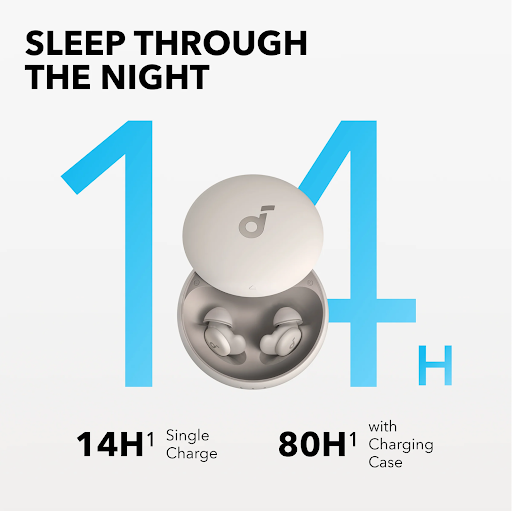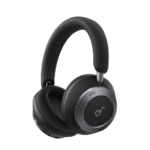Due to the stresses of day to day life along with endless screen time devoted to social media platforms, attaining quality sleep has become increasingly difficult. Other factors, such as a loud city, a humming of traffic, or even the partner sleeping next to you, can greatly hamper your sleep. With the invention of sleeping headphones, it is now possible to combine sounds of comfort and innovation to help drift off sleep peacefully.
Personally, I have had to deal with city noise and insomnia for an extended period of time. These small but effective devices have the aid of transforming the sleep experience of countless individuals all over the globe. Let’s explore what sleeping headphones are. What they are made of and how they have helped light sleepers attain quality sleep.
What are Sleep Headphones?
As the name suggests, sleeping headphones can be defined as audio devices that are meant to be used while sleeping. While traditional headphones and earbuds are worn, sleeping headphones are slender and gentler on the ears as they are headbands which contain audio devices. While the primary function of the device is through soothing audio including white noise and meditation, they assist greatly for individuals who sleep on their sides.
These headphones are particularly beneficial when used in conjunction with apps or libraries that aid sleep. They also assist with anxiety or tinnitus since soft sounds that calm the mind help in diverting attention and minimizing restlessness during sleep.
Headband sleeping headphones, wireless Bluetooth earbuds made for sleeping, and sleep masks with attached speakers are some of the most common types.
While the latter types suit the user’s needs best, the former is most convenient for side sleepers or those who fidget while sleeping. The side sleeping specific headband has flat speakers on the sides so that the soft speakers do not irritate the user’s ears and are composed of soft and airy material. The other categories also include minimalist style wireless earbuds that do not appeal to users who enjoy headbands for sleeping. For users who want total sleep, the sleep masks with speakers designed for them.
What Makes Sleeping Headphones So Popular?
Due to the increase of non-pharmaceutical sleep solutions and the growing concerns of sleep disorders, sleeping headphones have come to provide a natural and side effect free method to relieve and improve sleep qualitatively. Sleep headphones have gained increased attention mainly for the following reasons:
- They block out disruptive sounds, snores, barks, and even the sounds of the streets giving users a chance to relax their minds.
- They calm stress and relax the mind through soothing sounds and, as a result, help the user fall asleep faster.
- They minimize nightly interruptions to maintain uninterrupted shifts of deep sleep.
- They help guided meditation and mindful breathing, essential for anxiety management.
- They make sleep more consistent and restful, improving the user’s sleep focus, productivity, and performance the following day.
As for me, a soothing bedtime playlist turned my nightly routine into a 30-minute window of meditation.
Identifying Your Needs When Selecting Sleeping Headphones
As for the primary selection criteria for sleeping headphones, comfort and sound quality, battery life, and even sleeping position come to mind. Some premium headphones even come with sleep-tracking features, temperature regulation, and even Bluetooth 5.0 for device free streaming to make the user experience more enjoyable.
For overwear comfort is paramount. Look for adjustable headbands and low-profile speakers. Equally important, the audio should be crisp but soft enough not to jolt you awake. Meditation tracks and sleep audio should be clear, but gentle.
Most styles work for back sleepers, while side sleepers should seek ultra-thin speakers or soft foam to avoid ear pressure. Battery life is important too: the best sleep headphones should last for 8–10 hours of playback.
Sleeping Headphones and Sleep Hygiene
Sleeping headphones can help improve sleep hygiene: the practices and environment that affect sleep. Headphones work best when combined with regular rituals, like turning screens off, dimming room lights, and applying lavender essential oil.
White noise, nature sounds, or binaural beats help most users achieve deep, restorative sleep. Others use sleeping headphones to listen to audiobooks or bedtime stories that slowly ease the mind without provoking overthinking.
Incorporating sound into a sleep routine not only assists in falling asleep but also helps in decreasing nighttime awakenings. It is an approach that sleep doctors, as well as those who practice cognitive behavioral therapy for insomnia, support and is based on sleep science.
Are Sleeping Headphones Safe?
The use of sleeping headphones is, in general, safe for daily wear, especially when kept at a moderate volume. Most modern designs are streamlined, non-cumbersome, and safe for skin contact. That said, avoiding headphones that play very loud audio is advisable, as even at low volumes, prolonged exposure could still pose a risk to hearing.
Volume-controlled devices are recommended for children and those who suffer from hearing problems. Individuals suffering from ear conditions must also seek a physician’s approval for prolonged use.
FAQs Regarding Sleeping Headphones
Can sleeping headphones be used all night?
Sleeping headphones are tailored for extended usage, as most models enable all-night use. Just ensure that the sleeping headphones used have enough battery for the duration.
Are sleeping headphones beneficial for those suffering from tinnitus?
Certainly. A good number of tinnitus patients wear sleeping headphones to cover the internal ringing using white noise, nature sounds, and soothing music.
Can sleeping headphones help mask snoring sounds?
While sleeping headphones may not have the full noise canceling capabilities that some headphones offer, they can help cover up snoring if paired with white noise or ambient sounds.
Are sleeping Bluetooth headphones safe for side sleepers?
Provided that they are low-profile, side sleepers can safely use wireless sleeping headphones. Seek out options with flat speakers contained within soft fabric to minimize pressure on the ears.
Can headband sleeping headphones be washed?
Most headband sleeping headphones are designed with removable speakers, making the fabric portion washable. Always refer to the care instructions provided by the brand.
Final Thoughts
The use of sleeping headphones have advanced from being luxury items to essentials for people dealing with noise distractions or looking to boost their sleep quality. For individuals dealing with noise distractions, sleep anxiety, or looking to improve their sleeping routines, these headphones serve as a peaceful and powerful solution.
As a former insomniac who used to toss and turn for hours at night, I can say that the adoption of sleeping headphones into my sleep hygiene routine truly changed my life. They go beyond being just a new gadget for the nightstand; they offer lifestyle transformation.Improving your overall well-being, focus, and mornings starts with prioritizing and investing in a good quality pair of which looks after sleep. With time, you’ll notice the significant ease you receive with sleep and the remarkable improvement in your overall well-being.

















